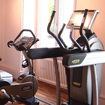Assessed TP 8
A1 Beginners level
Description
Materials
Main Aims
-
To provide clarification and practice of giving advice using 'should' in the context of health and bad habits.
Subsidiary Aims
-
To provide product writing practice of a advice article in the context of health
Procedure (36-49 minutes)
- T starts by introducing 'bad habits' to the students by telling them about her smoking habit. - She writes 'bad habits' on the WB - She asks sts to discuss which bad habits are bad for your health in pairs for 1 minute. - Sts come to the WB and write around the central 'bad habits' which one they have thought of. - T discusses a few of the examples briefly with sts.
My friend Lucy: - T draws a picture of a sad girl called Lucy on the WB - She introduces her and draws the following as she elicits Lucy's habits from the sts, why is Lucy unhappy?: *Lucy is fat *Lucy smokes *Lucy drinks alcohol *Lucy has bad skin from chocolate - T elicits from the sts that Lucy is 'unhealthy' and draws 2 columns good and bad things for her health. - T explains that Lucy needs help, so we will help her by giving her advice. ' T tries to elicit should and shouldn't from students from the words in the columns. - T writes Lucy should __________' on the WB and elicits from the students. - Lucy _______ ____________' on the WB and elicits from sts. - T then highlights should and explains that to help lucy we need to give advice and tell her what to do.
- T draws 2 columns on the WB positive and negative - T looks back at the example sentences with sts. - T then elicits from students, should and should not from the sts. - T explains that should not is too formal and they should use the 'shouldn't' form in every day life. - CCQs - Drills example sentence sentences.
- T starts by chesting the HO. - She explains that they will match the problem with the right advice. - T brings the HO up on the WB from the projector. - T checks the students understanding with ICQs. - T divides the class into pairs and gives the HO. - Sts have 2 minutes to complete it during which the T monitors. - When sts finish they will compare answers in groups of 4 if possible or if the class is too small with the person sitting on the opposite side whom isn't their partner. - Then T gives them an answer key and monitors again for mistakes and gives students who have had a struggle some explanation and help.
- T chests the HO. - T explains the task to the students: *They should think about their own health and how they can make it better or (tries to elicit 'improves') or just gives the synonym if students struggle with it and writes it in the vocab section on the WB. - T explains that they should complete the sentences with should or shouldn't and what they should do. - T brings up the HO on the WB and completes the first one as an example. - Checks students understanding of the task with ICQs. - T divides the class into pairs. - T gives sts the HO and tells them that they have 2 minutes to complete the 4 sentences together. - T monitors the sts while they complete the task, picks up on any mistakes and gives WC error correction once students have finished if necessary.
- T gives students the scenario: 'There are 2 people with problems and they need your advice. - Divide the class into 2 groups. - T gives instructions, telling sts to read their problems and think of advice for this person. - They should use 'should' and they can look at the first HO for ideas. - Explain that they will give a presentation at the end. - T demonstrates: write a problem on the WB and give advice. - Sts have 4 mins to think of advice as a group. - Sts will then present their problem and the advice they thought of.

